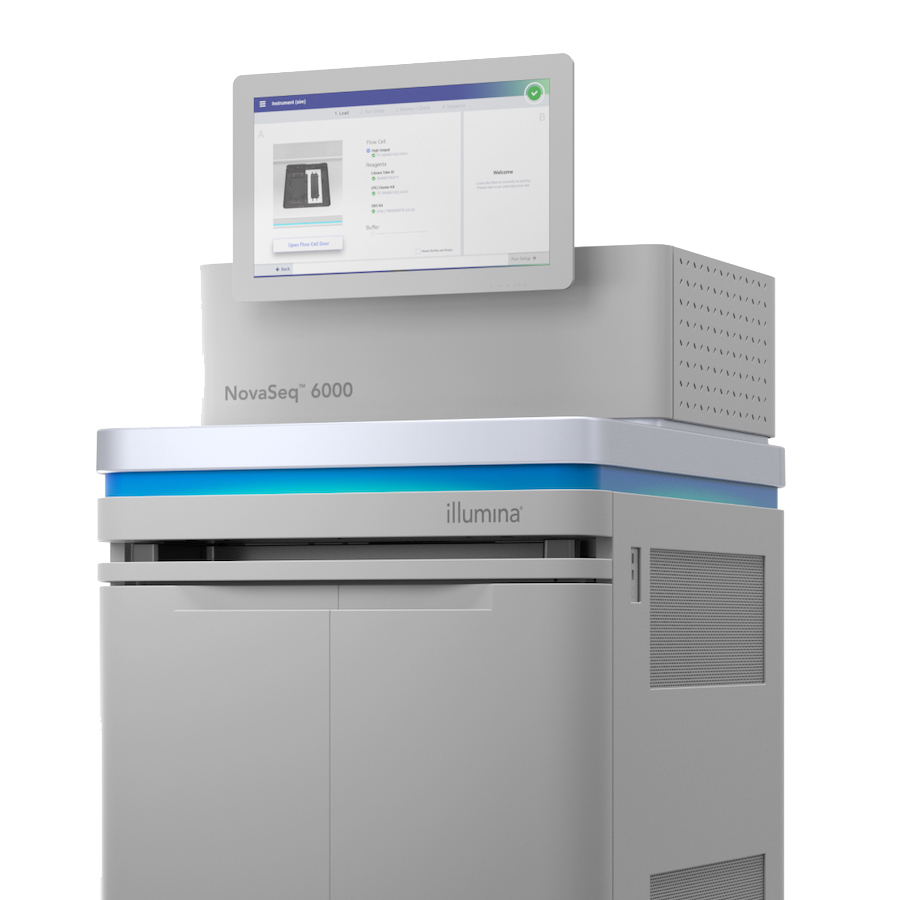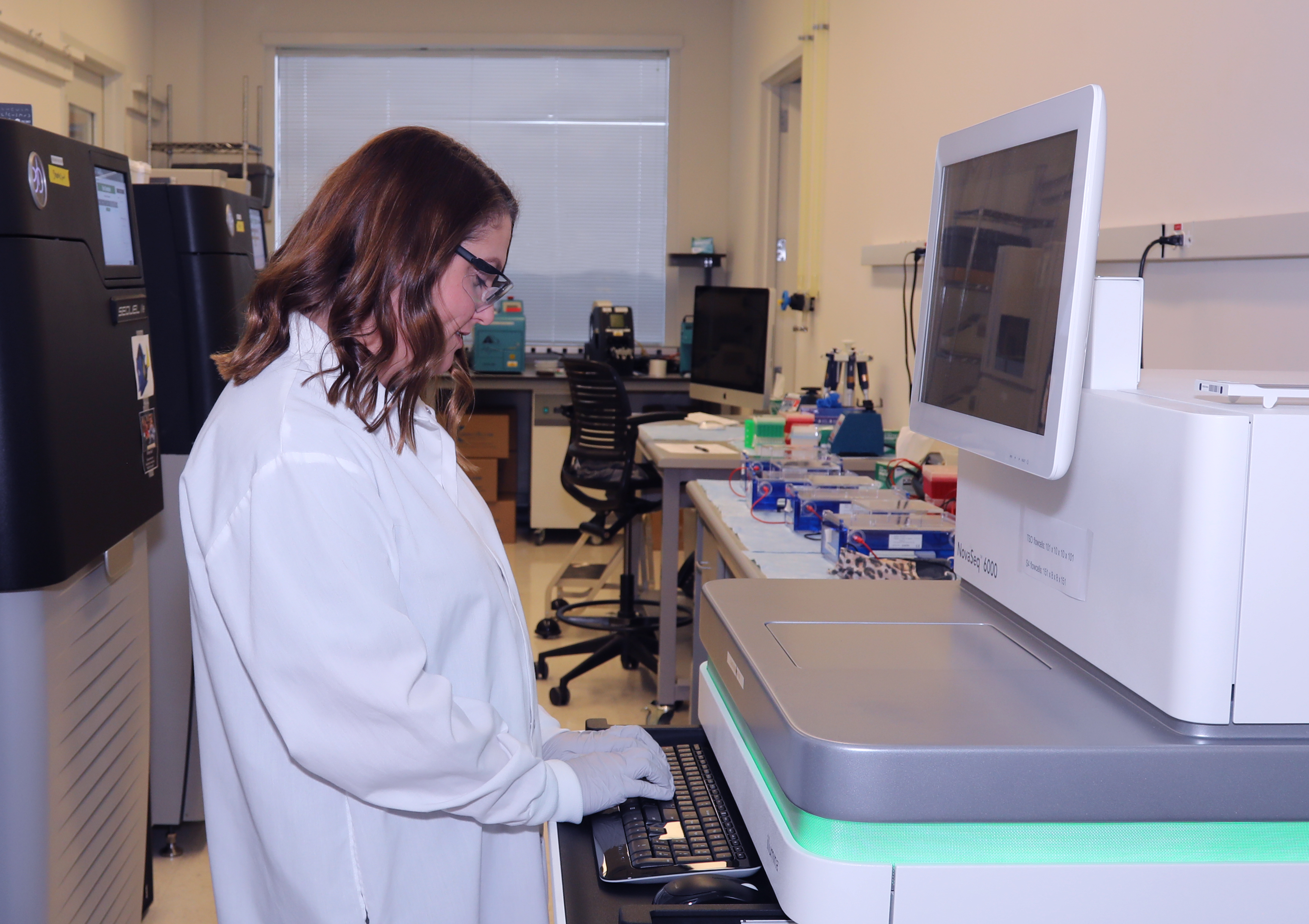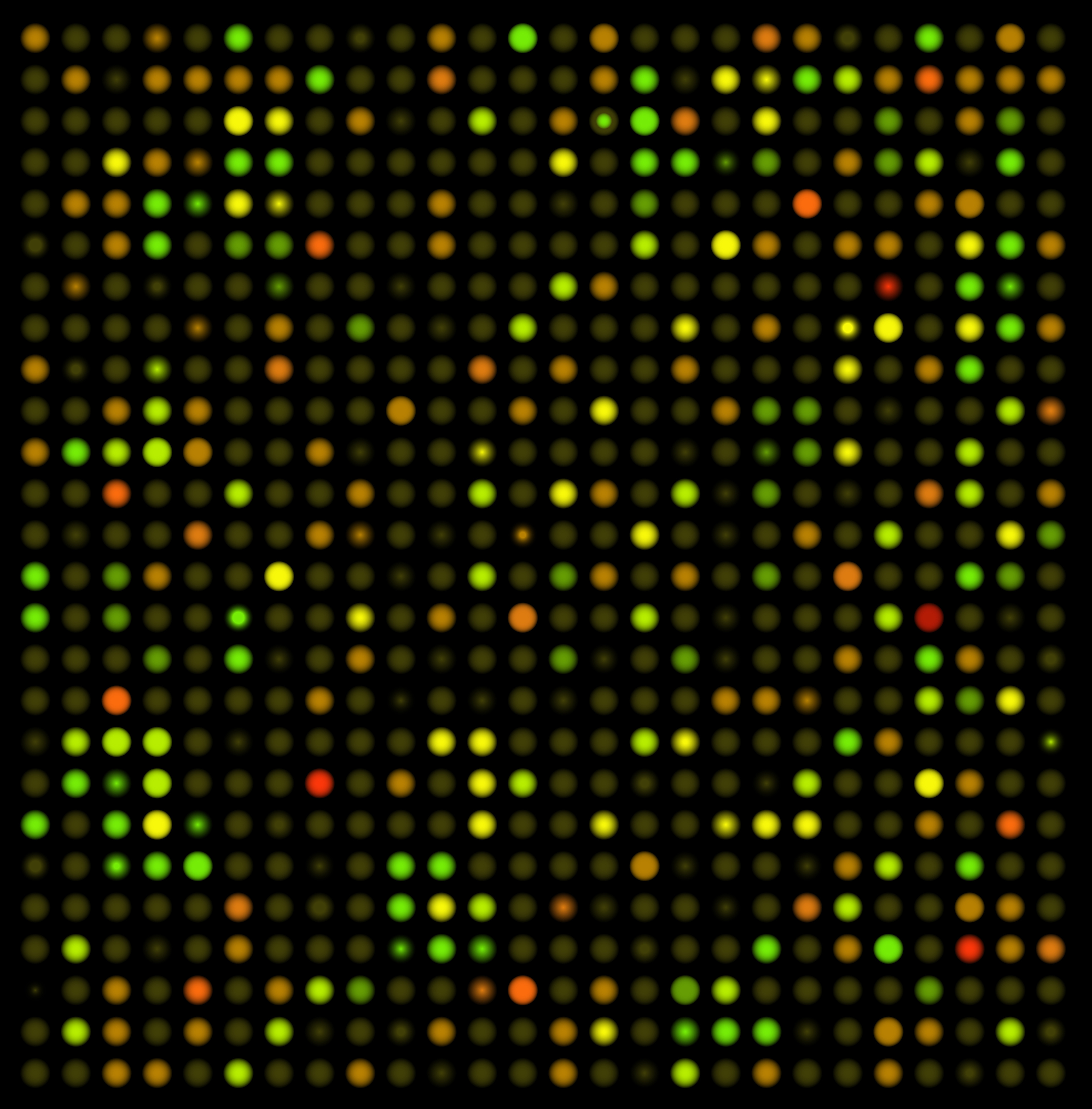
CUTTING-EDGE TECHNOLOGY
CAPABILITIES
The HudsonAlpha Genome Sequencing Center is constantly improving its technology and knowledge base to keep current with the rapidly advancing sequencing technologies. Some of its sequencing technologies include:
PacBio long read sequencing
PacBio Revio
The PacBio Revio system has all the capabilities of the Sequel ll and Sequel lle, but with higher throughput. The Revio system uses a high-density, 25 million ZMW SMRT Cell, up to 4 SMRT Cells in parallel sequencing to provide 360 Gb of HiFi reads per day. In addition to this, the advanced algorithms on the Revio system deliver exceptional read accuracy plus methylation calling in every run.
Benefits:
- Long reads- tens of kilobases in length
- High accuracy- >99.999% consensus accuracy
- Uniform coverage- No bias based on GC content
- Single-molecule resolution
- Reads the same molecule multiple times for high consensus accuracy
- Deeper biological insights, less data processing, and faster results thanks to the unmatched clarity of HiFi reads
- Reliable and affordable high-throughput sequencing for a broad range of applications
- Gain insight into difficult to sequence regions of the genome
- Better data for superior results with lower coverage, from a single technology
- Less time spent on data processing and analysis for faster answers
- Cost savings at every step of your sequencing pipeline
Sequencing Applications:
- De novo sequencing
- Variant detection
- Complex populations
- RNA sequencing
- Epigenetics
- Targeted sequencing
PacBio Certified Service Provider


Check out this video to hear HudsonAlpha Genome Sequencing Center co-director Jeremy Schmutz discuss the benefits that HiFi reads from the PacBio System bring to sequencing, assembly, and analysis of complex genomes.
The HudsonAlpha Genome Sequencing Center were beta testers for the PacBio Sequel II system in early 2019. Learn More →
Illumina short read sequencing
NovaSeq 6000
The NovaSeq 6000 system detects unique fluorescence from clonally amplified DNA templates. The patterned flow cells have a defined, organized array of etched wells that each contain a DNA probe for adhering complementary sequences added to DNA libraries. This patterned flow cell replaces the randomly scattered clusters found in imaging intensive, non-patterned flow cells responsible for slower processing time. By providing multiple flow cell types and read lengths, the NovaSeq can accommodate a variety of sequencing methods, project scales, and data needs.
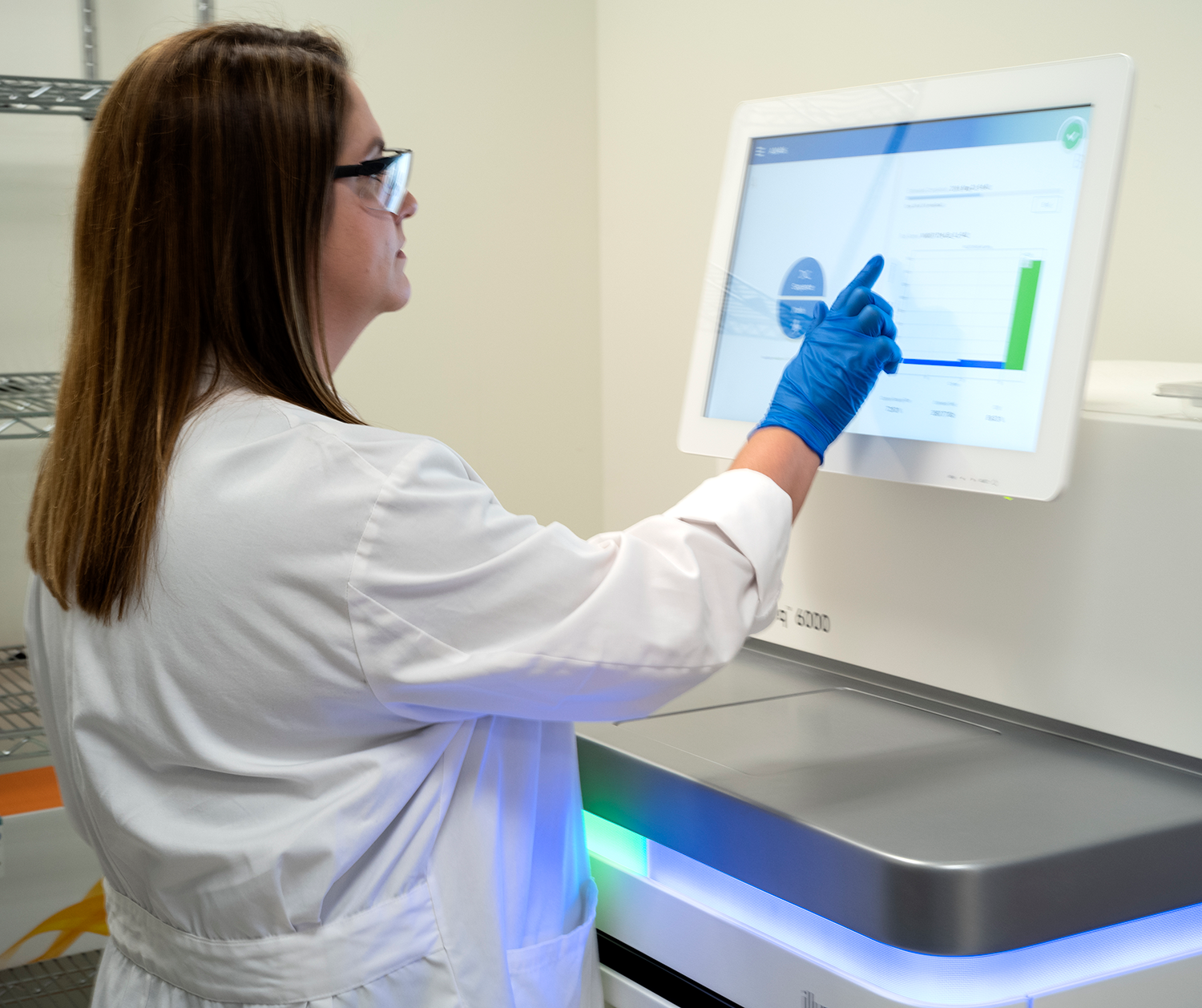
Benefits:
- High-throughput sequencing
- Patterned flow cells with scalable throughputs to accommodate most projects
- Maximum output per run- 6 Tb
- Maximum reads per run- 20 billion
- Simple streamlined automated workflows
- Configure the system to sequence a trio in one day or up to 48 genomes in ~2 days for the most comprehensive coverage
Sequencing applications:
- Large scale resequencing of humans, plants and animals
- Transcriptome sequencing
- Hi-C sequencing
- Amplicon sequencing
Research Microarrays
DNA microarrays are a powerful laboratory approach that involves binding an array of thousands to millions of known nucleic acid fragments to a solid surface. They can have many uses, including detecting single nucleotide polymorphisms, aberrations in methylation patterns and alterations in gene copy number. We run both the Illumina and Affymetrix microarray platforms.
Global Screening Array (GSA)
Global Screening Array (GSA) combines multi-ethnic genome-wide content, curated clinical research variants and quality control markers. 640,000 total markers
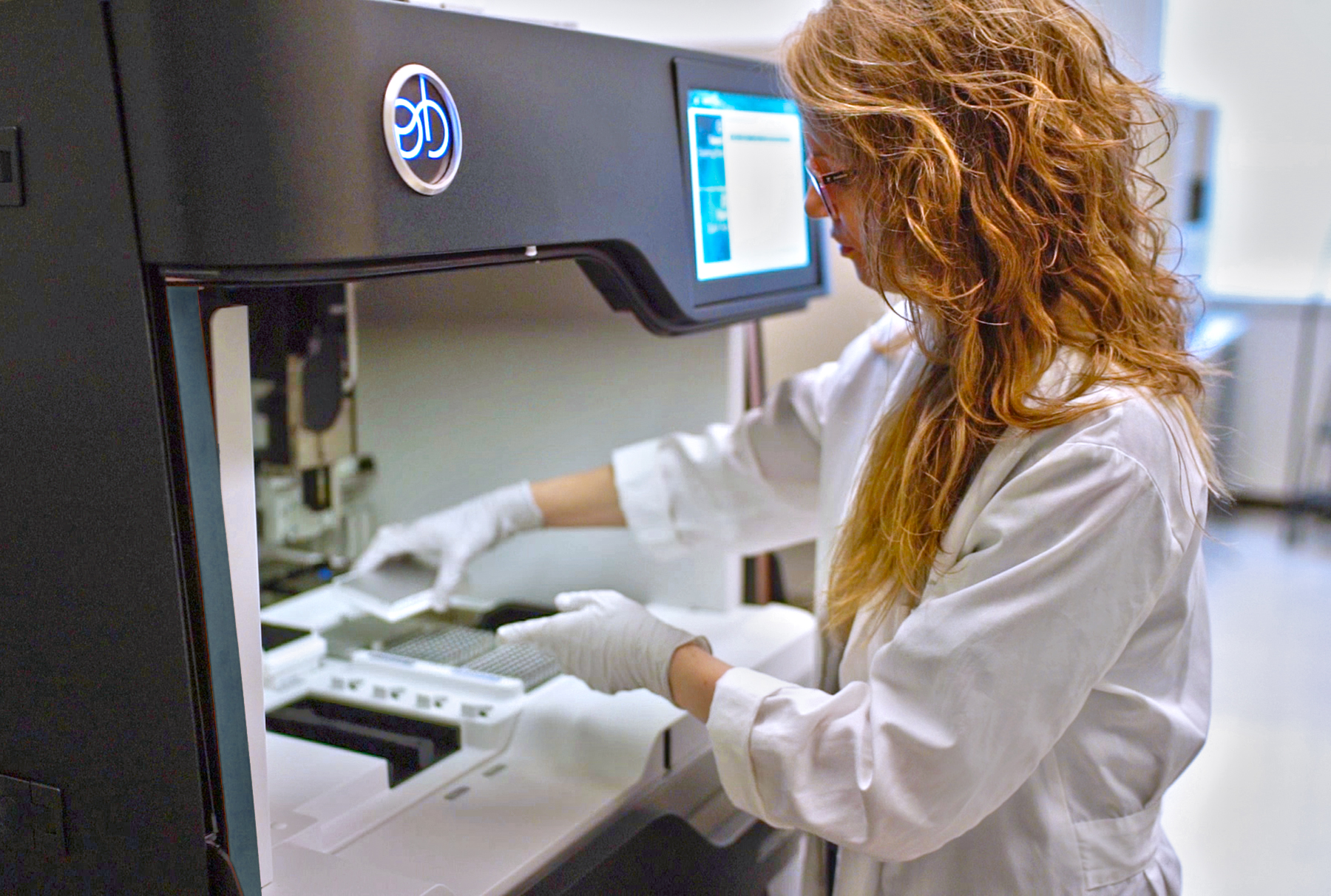
Global Diversity Array (GDA)
Global Diversity Array (GDA) is the commercial version of the array chosen by the NIH All of Us Program, including highly optimized multi-ethnic, genome-wide content with curated clinical research variants. Most cost-effective variant coverage. 1,825,277 total markers
MethylationEPIC array
MethylationEPIC array is a methylation profiling array covering CpG islands, genes and enhancers. 850,000 total markers
Benefits:
- High reproducibility
- High statistical power
- Trusted data quality
- Allows for large-scale population studies
- Economical
Sequencing applications:
- Clinical research applications
- Pharmacogenomics research
- Complex disease discovery
- Disease risk profiling
Sequencing Assembling and Analysis
De novo Genome Assembly
The HudsonAlpha Genome Sequencing Center is one of the few centers in the world performing original sequencing of plants and animals. The non-profit center has generated and publicly released reference genomes for more than 180 plants. Reference genomes serve as a point of comparison for future study and lay the foundation for downstream functional studies for the improvement and production of domesticated crops. In the cases of crop species such as sorghum, soybean, cotton, switchgrass and millet, these genomic references form the basis for genomics-enabled crop breeding to increase yields.

Genome Sequencing Analysis
Advanced technologies have given us both access to complex plant genomes and the ability to examine genetic differences across thousands of plant varieties. In addition, high performance computing allows us to analyze and integrate these enormous amounts of data.

Request More Information
For more information to help you with your sequencing assembly and analysis project fill in the form below:


